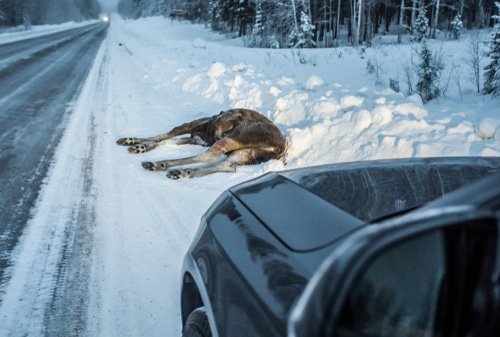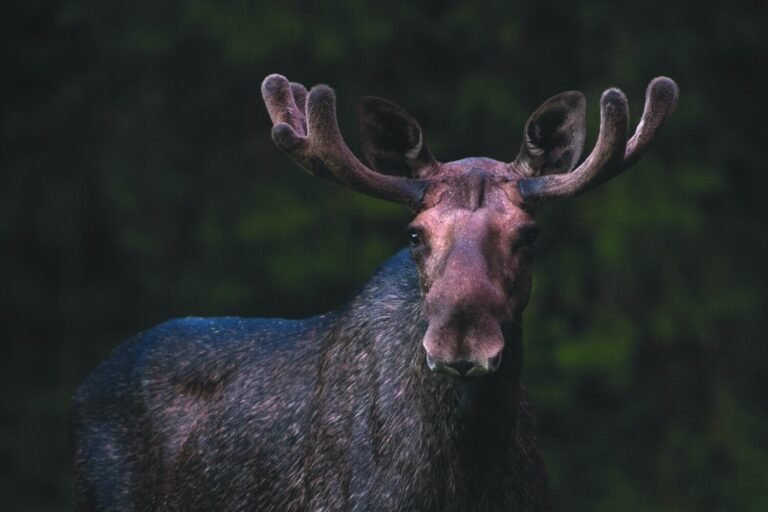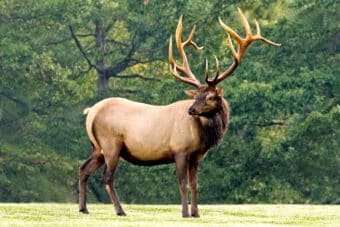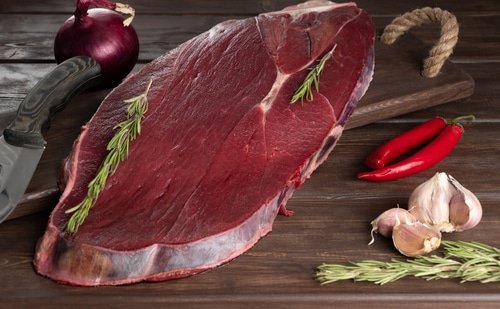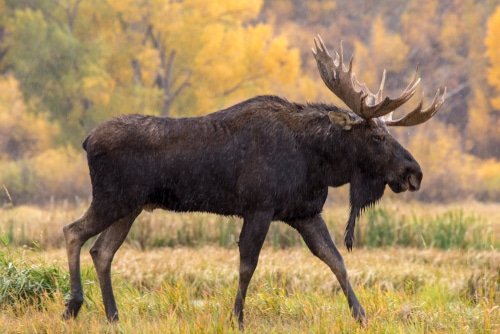With its towering antlers and imposing presence, the majestic moose has long captured the imagination of nature enthusiasts and wildlife lovers alike. However, these magnificent creatures have faced significant challenges over the years, leading to a decline in their populations. Moose conservation success stories are discussed here.
Moose Conservation Efforts
Moose conservation is a multifaceted field encompassing various strategies to preserve and restore moose populations. This includes initiatives such as habitat preservation, reintroduction programs, genetic research, sustainable hunting practices, and collaborative efforts with indigenous communities. Through these endeavors, scientists and wildlife management agencies strive to prevent further decline and promote the recovery of moose populations.
Preserving Moose Populations
Preserving moose populations is not just about protecting a single species; it is about safeguarding the delicate balance of ecosystems they inhabit. Moose play a significant role in shaping their environment by influencing vegetation growth through browsing behaviors.
Their presence also supports biodiversity by providing food sources for other predators like wolves and bears. Moreover, moose serve as indicators of ecosystem health.
Their vulnerability to environmental changes makes them highly sensitive to climate change and habitat degradation. By monitoring moose populations closely, scientists can gain valuable insights into the overall well-being of ecosystems.
In addition to ecological importance, moose also hold cultural significance for many communities worldwide. They are deeply ingrained in indigenous peoples’ folklore, art, and traditional practices in regions where they roam.
Therefore, preserving a viable moose population ensures the continuation of cultural heritage intertwined with these magnificent creatures. Through effective conservation measures and collaborative efforts between scientists, government agencies, and local communities, we can work towards securing a brighter future for moose populations while enhancing our understanding of nature’s intricate web.
In the following sections, we will delve into some remarkable success stories in moose conservation, highlighting the incredible achievements that have been made so far and the challenges that lie ahead. So, let’s embark on this journey of discovery and celebrate these wins in protecting one of nature’s most awe-inspiring creatures – the moose.
The Recovery of Moose in North America
Historical decline and factors contributing to it
Once upon a time, the majestic moose roamed North America in abundance. However, their populations dramatically declined over the years due to several factors. Habitat loss caused by human activities, such as deforestation and urban expansion, significantly diminished suitable moose habitats.
Additionally, uncontrolled hunting practices in the past exacerbated the decline. The combination of these factors pushed moose populations to the brink of extinction.
Successful reintroduction programs in various regions
Fortunately, light is at the end of the tunnel for our antlered friends. Dedicated conservationists have implemented successful reintroduction programs across North America to revive declining moose populations.
Two notable examples include Yellowstone National Park’s restoration program and efforts made in New Hampshire’s White Mountains. Yellowstone National Park’s successful restoration program involved extensive habitat protection and predator management.
With improved vegetation management and controlled wolf populations, moose numbers rebounded significantly. The delicate balance between prey and predators was restored, leading to a flourishing environment for these magnificent creatures.
Similarly, New Hampshire’s White Mountains witnessed triumphant reintroduction efforts through collaborative initiatives between wildlife agencies and local communities. By carefully selecting suitable release sites with ample food sources and minimal human disturbance, captive-bred moose were successfully translocated back into their natural habitat.
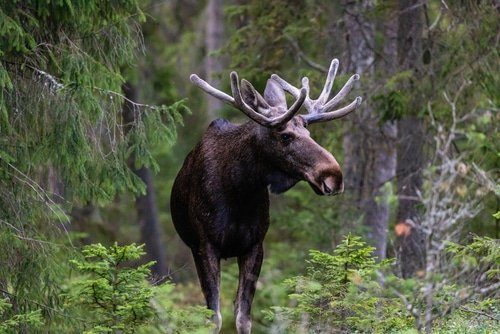
European Moose Conservation Efforts
The resurgence of moose populations in Sweden and Finland
While North America witnessed impressive conservation successes with its beloved moose population, Europe also has inspiring stories to share. In countries like Sweden and Finland, where cultural ties with nature run deep, concerted efforts have led to remarkable recoveries.
Factors contributing to the recovery of European moose populations include strict hunting regulations and sustainable management strategies. These countries have achieved a delicate balance between human needs and moose conservation by implementing seasonal hunting restrictions, setting quotas based on population assessments, and enforcing strict penalties for illegal hunting.
Conservation measures implemented
To further protect European moose populations, habitat protection, and restoration have emerged as crucial conservation measures. Authorities in Sweden and Finland prioritize the preservation of large tracts of forested areas that serve as vital moose habitats. By embracing sustainable forestry practices that maintain diverse ecosystems and leaving buffer zones around key moose territories, these countries create safe havens for moose to thrive.
Additionally, collaborative partnerships between wildlife agencies and local communities promote responsible land use practices that benefit humans and wildlife alike. This includes managing agricultural activities near moose habitats to minimize conflicts while ensuring adequate animal food sources.
The successful conservation efforts in North America and Europe highlight the resilience of these magnificent creatures. Through a combination of proactive management strategies, habitat protection, regulated hunting practices, and community engagement, we can ensure a bright future for our beloved moose populations across the globe.
Innovative Approaches to Moose Conservation
Genetic Research and Management Techniques
Genetic research and management techniques have been crucial in moose conservation efforts. DNA analysis has enabled scientists to track the population dynamics, monitor gene flow, and make informed management decisions.
By analyzing genetic markers, researchers can assess the health and diversity of moose populations. This information is invaluable in identifying unique genetic lineages and prioritizing conservation actions accordingly.
Translocation Programs to Enhance Genetic Diversity
Translocation programs have been implemented to enhance genetic diversity among moose populations. This approach involves capturing individuals from healthy populations and relocating them to areas where the gene pool is limited or at risk.
These translocations help prevent inbreeding depression and ensure the long-term viability of moose populations in these regions. By carefully selecting suitable habitats and considering genetic compatibility, translocation programs contribute to maintaining healthy levels of genetic variation among moose.
Collaborative Efforts with Indigenous Communities
Collaboration between indigenous communities, scientists, and government agencies has proven highly effective in moose conservation. Indigenous communities often possess traditional knowledge and practices passed down through generations regarding the careful stewardship of moose habitats.
Integrating this wisdom with scientific expertise can significantly enhance conservation efforts. Partnerships between indigenous communities, scientists, and government agencies foster mutual understanding, respect cultural values, promote sustainable land management practices, and ensure successful conservation outcomes for wildlife and local communities.
Challenges Ahead for Moose Conservation
Climate Change Impacts on Moose Habitats
One of the major challenges facing moose conservation is climate change’s impact on their habitats. Rising temperatures lead to changes in vegetation composition, affecting food availability for moose. As heatwaves become more common, the plants they rely on may wither or decline in abundance, potentially leading to malnutrition and reduced reproductive success.
Additionally, climate change contributes to increased tick populations, which can transmit diseases such as Lyme disease to moose. These combined effects pose significant threats to moose populations and necessitate proactive conservation measures.
Balancing Human Activities with Moose Conservation
Balancing human activities with moose conservation is a critical challenge. As human populations expand and urban development encroaches upon natural habitats, conflicts arise between agriculture, forestry, and the preservation of moose habitats.
Effective management strategies must be implemented to minimize habitat fragmentation and ensure adequate space for moose populations. Furthermore, sustainable hunting practices that consider population dynamics and respect ecological limits are essential for maintaining healthy and resilient moose populations.
Conclusion
Innovative approaches such as genetic research techniques and translocation programs have played a vital role in successful conservation efforts for moose populations. Collaborative efforts with indigenous communities have also been instrumental in combining traditional knowledge with scientific expertise. However, challenges lie ahead due to climate change impacts on their habitats and the need to balance human activities with conservation needs.
Nevertheless, by understanding these challenges and implementing proactive measures, we can protect these magnificent creatures for future generations. Let us continue working together towards a future where thriving moose populations testify to our commitment to biodiversity preservation.

